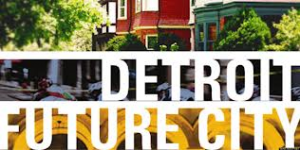 “Expanding Opportunities in America’s Cities: The Kresge Foundation Story.” This was the title of yesterday’s Conversation on Philanthropy presented by the University of Southern California’s Center on Philanthropy and Public Policy (CPPP). It was really two conversations, one on strategic direction change within a foundation and the other on Detroit. I’ll cover both, but focus on Detroit. The two panelists are fascinating in their own right. Rip Rapson is President and CEO of The Kresge Foundation and has a distinguished career in philanthropy and public service. Irene Hirano Inouye, (a fellow CPPP board member) is the President of the U.S. Japan Council, was chair of Kresge when Rip was hired and is on the board of the Ford Foundation.
“Expanding Opportunities in America’s Cities: The Kresge Foundation Story.” This was the title of yesterday’s Conversation on Philanthropy presented by the University of Southern California’s Center on Philanthropy and Public Policy (CPPP). It was really two conversations, one on strategic direction change within a foundation and the other on Detroit. I’ll cover both, but focus on Detroit. The two panelists are fascinating in their own right. Rip Rapson is President and CEO of The Kresge Foundation and has a distinguished career in philanthropy and public service. Irene Hirano Inouye, (a fellow CPPP board member) is the President of the U.S. Japan Council, was chair of Kresge when Rip was hired and is on the board of the Ford Foundation.
The Kresge Foundation was established in 1924 by Sebastian Kresge (the “K” in Kmart) . “For more than 80 years, his mandate to promote human progress was realized through the support of fundraising campaigns (through challenge grants) to build capital projects – libraries, hospitals, schools, museums, community centers and the like.” By 2007, there was a sense that the foundation could make a bigger impact through a different direction. Irene said that the board was committed to change, but didn’t know what it looked like. So they searched for a new CEO that could work with the board in the evolution. They hired Rip and the transformation began. It would be “fundamentally disruptive” to drop the capital challenges. They needed a gradual shift. Kresge is a strong brand and had helped build many needed projects across the country. The decision was how to balance the capital projects with new initiatives. Rip said that “grants alone are not sufficient to make long term change.” The goal was to be closer to mission with a commitment to low income communities in urban areas. Today the foundation works to expand opportunities in America’s cities through grant making and investing in arts and culture, education, environment, health, human services and community development.
It is their place-based strategy in Detroit that caught my attention. We hear a lot about Detroit in the news, and just when it seems things are turning around, there is a scandal with the mayor and then bankruptcy. Metro Detroit is Kresge’s home town, so when changing their strategy, Detroit became a higher priority. The Kresge board asked themselves “are they a holding company (referencing their support for desperate organizations and causes) or are we a unifier.” Being a unifier, and integrator, is core to their Detroit work. This is where the pivot from traditional grant making comes when they decide to be actively involved in problem solving. They used their influence to help the community move forward. They helped lead a three year reimagining, looking at 11 different components from land use, to mass transit and education. Participants were from government, business, nonprofits, philanthropy and the public. Each one of the components had a “blueprint.” The result, the Detroit Future City Plan. The goal was to answer this question “What do we need for the long term health of this community?” Rip said something profound, “Philanthropy put in place the scaffolding to pull together and help shape the rebuilding. But scaffolding is not permanent, it’s what is built inside that lasts.” He made one last statement, “Embrace collective action!” http://kresge.org/ http://detroitfuturecity.com/ http://cppp.usc.edu/
